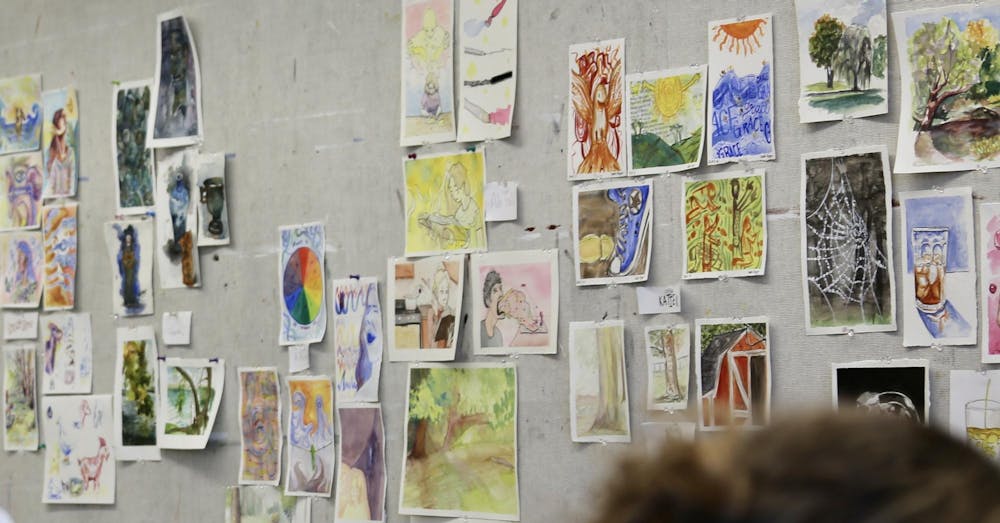How does one capture strength with nothing more than a little water and the stroke of a paintbrush?
With only an hour to complete each painting of her Go For It assignment, Mantha Brownson, a junior art education major, has found that the answer comes in embracing the fluidity of her medium.
It comes, too, through the freedom of exploration that she’s been given in Water-Based Media, an art course at Taylor. Taught by Audrey Felger, an adjunct professor in the Art department, the class is meant to allow students to develop their skills with a degree of independence.
For all the creativity within the department, there is often a limitation or goal students must meet to gain success. Contrasting that, Felger has so far emphasized freedom over strict guidelines in the class. The approach is one she hopes will serve her students in post-graduation as well.
“Some jobs, they will tell you exactly what you can do,” Felger said. “But if you're graduating as a studio artist, as I did…and if you've never chosen (how to create independently) before, that can be a really scary thing. It's really neat to be able to have a space inside college, inside your learning, where you're actually getting to practice that (independence), getting to find out, ‘What is my voice like?’”
This freer teaching style fits parallel to the unconfined nature of the media that students study. Watercolors are difficult to control and contain, as their pigment often flows freely with the water it mixes with.
Not all students initially welcomed that freeness.
“I’m learning to appreciate it,” Brownson said. “At the beginning, it was really hard for me…it's so chaotic, and I feel like I need to control it and have it do exactly what I want it to do.”
As she has grappled with the concept of strength in each of her Go For It assignments—one painting done in one hour each day of the week—Brownson has found there is strength, too, in letting things go. Along the journey, she has discovered beauty in exploring a medium that forces a departure from her usual, crisp style.
Brownson has also learned to admire the strengths of others in the course.
“This (water-based media) is not my strength,” she admitted. “But it's nice, too, because I can appreciate it even more.”
Felger noted that many students come into the course with different comfort levels. Many of her students had never worked with watercolor or gouache before the course, so each person explored the media in different ways and at different speeds. Felger has simply created a space for each of them to grow.
Caroline Teal, a junior double-major graphic art illustration and psychology student, was one early adopter of the media.
“I like how it's very much about layers,” Teal said. “You can see how the colors layer and interact and the edges that it creates.”
It also allows a further expression of her more free-spirited art style and has given her an opportunity to explore what her topic about holy spaces means to different people. More than just monasteries and church buildings, Teal has found holiness is a concept as boundless as the form of the class itself.
Like Brownson, Teal has done research through interviews and books and has created pieces based around those responses. She interviewed one person who found a shower to be a holy place. Brownson has conducted interviews that have led her to honor everyone, from mothers with young children to those who have chosen life when struggling with thoughts of suicide and depression.
For Felger, that’s what the root of the class is about.
“I feel like I have very little to do with it, really,” she said. “I gave them the prompt, and I'm giving them space.”
In more ways than one, she has given her students a canvas—and the tools with which to color it. The rest is up to their interpretation, as creativity will flow through their brushstrokes like water spilled across the page, lightening and bringing life to an open surface.





